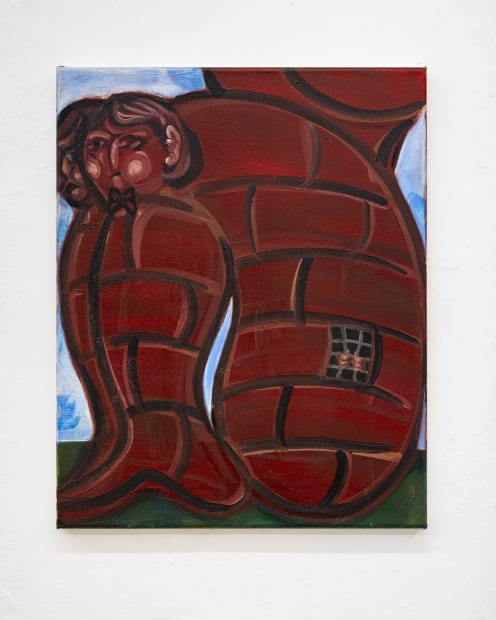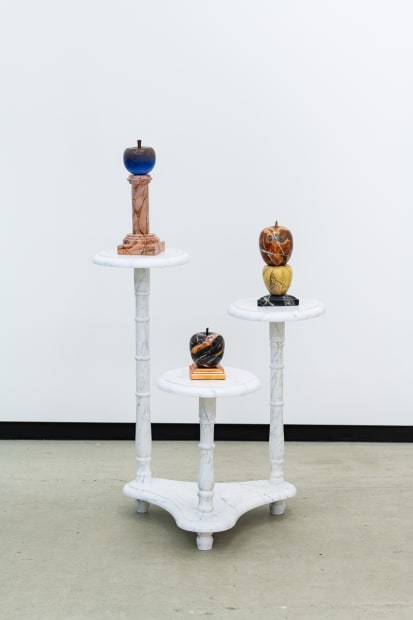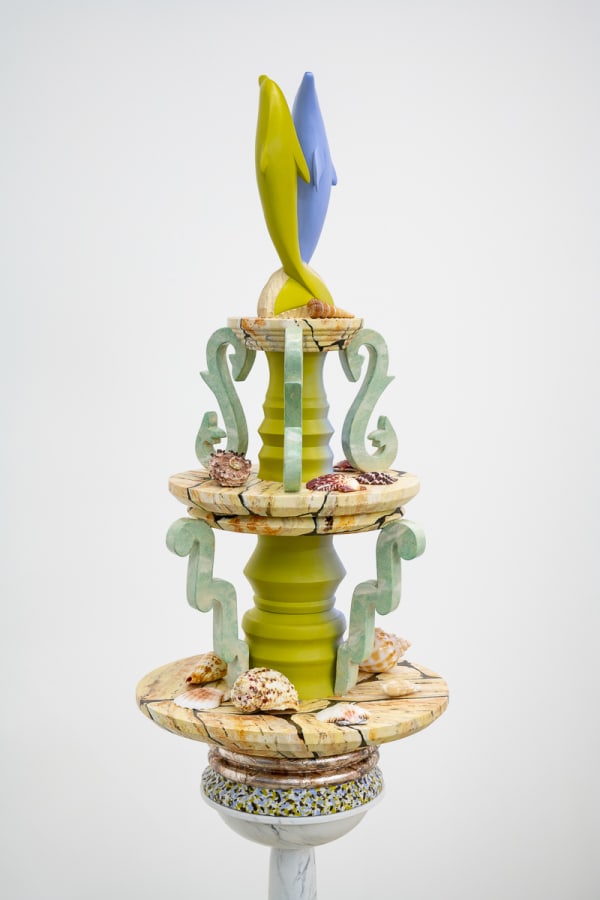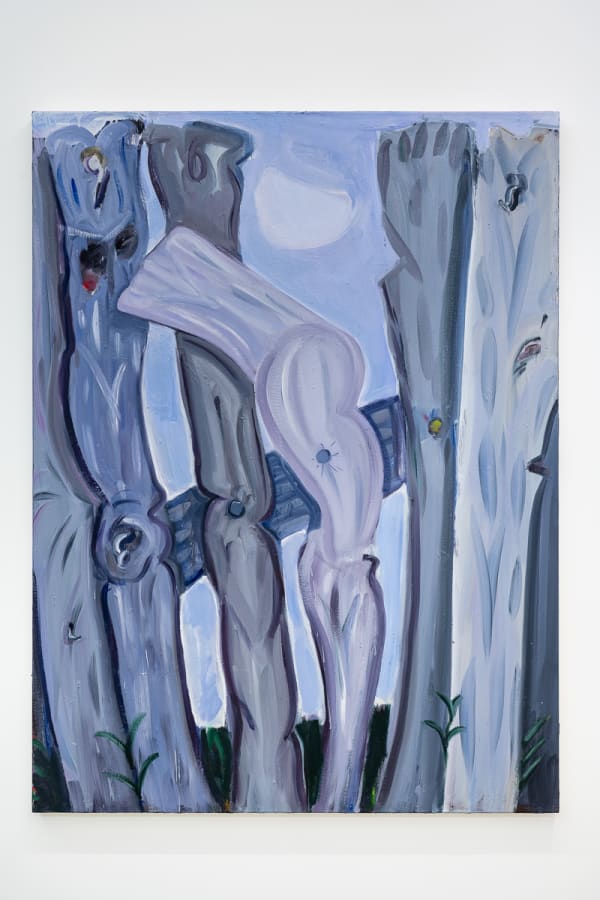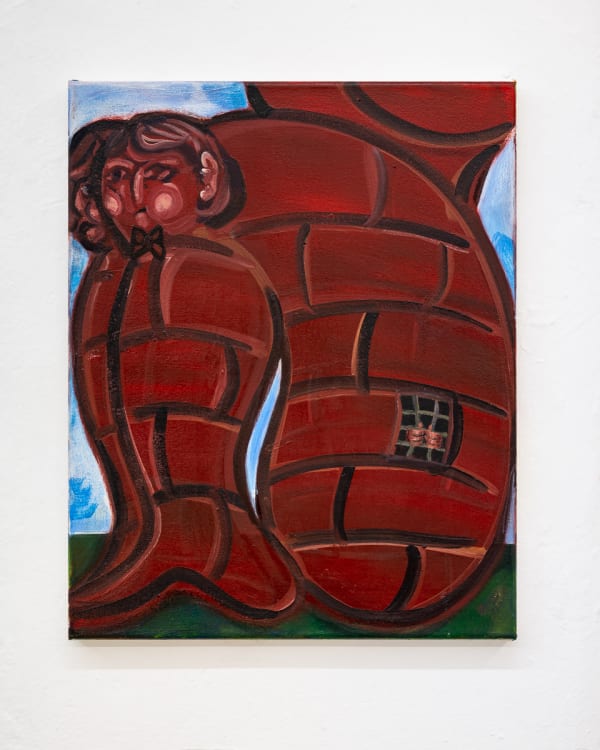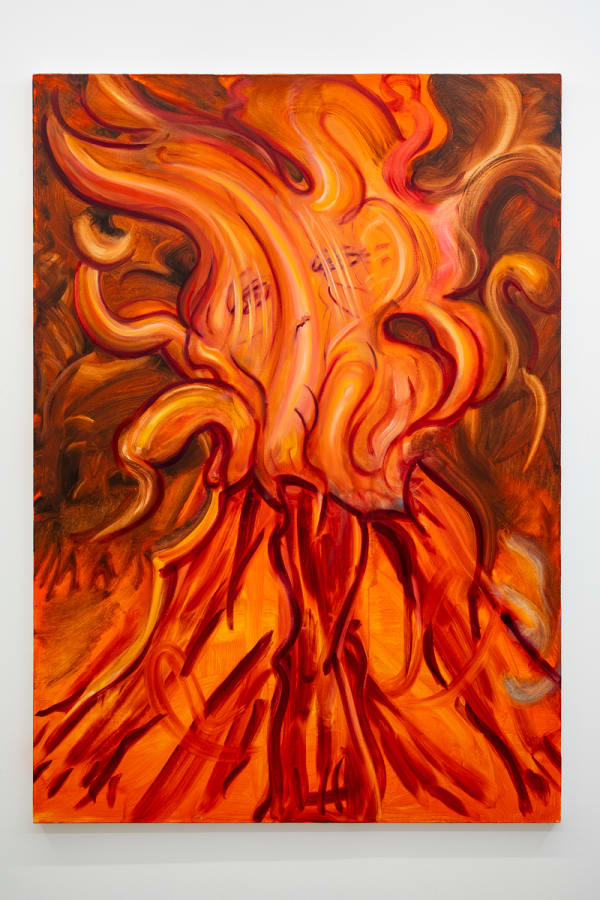-
Muscle Beach
4 - 25 SeptemberMuscle Beach is an exhibition of works by Hannah Bays and Ana Kazaroff, curated by Victoria Gyuleva.
-
Kupfer is pleased to present the exhibition Muscle Beach, featuring London-based artists Ana Kazaroff and Hannah Bays.
The show, which brings together a series of sculptures and furniture by Kazaroff and paintings by Bays, explores how inanimate objects tell stories of human desire. The multiplicity of this feeling runs through both artists’ practices: desire as a motivational and life force for Bays and as an aspiration for value and authenticity for Kazaroff. While desire is usually associated with fantasies beyond ordinary life, the artists are interested in how it’s manifested in commonplace objects and the everyday.
-

Hannah Bays, Slow Dance, 2021, Oil on canvas, 170 x 120 cm
-

Hannah Bays, Sentry, 2020, Oil on canvas, 50 x 40 cm
-

Ana Kazaroff
El Pailer, 2021, Copper leaf and oil on wood, 9.5 x 6.5 x 6.5 cm
Vulcano, 2021, Oil on wood, 16 x 9 x 9 cm
The Lobby, 2021, Oil on wood, 13.5 x 8 x 8 cm
-

Ana Kazaroff, La Nueva Covadonga, 2021, Oil paint, silver leaf, wood and plaster, 50.5 x 16 x 14 cm
-
While both Bays and Kazaroff are interested in the complex relationship between human emotions and everyday objects, their visual analysis of desire is quite different. The artists show us the vast complexities of this emotion, and offer us a new way to experience empathy - to find the human by looking at the inanimate.
-
-
 Ana Kazaroff, Anna C, 2021
Ana Kazaroff, Anna C, 2021 -
 Ana Kazaroff, La Nueva Covadonga, 2021
Ana Kazaroff, La Nueva Covadonga, 2021 -
 Ana Kazaroff, Paradisa, 2020
Ana Kazaroff, Paradisa, 2020 -
 Ana Kazaroff, Russian for Free, 2021
Ana Kazaroff, Russian for Free, 2021
-
 Ana Kazaroff, Santa Fe 5073, 2021
Ana Kazaroff, Santa Fe 5073, 2021 -
 Ana Kazaroff, El Pailer, 2021
Ana Kazaroff, El Pailer, 2021 -
 Ana Kazaroff, The Lobby, 2021
Ana Kazaroff, The Lobby, 2021 -
 Ana Kazaroff, Vulcano, 2021
Ana Kazaroff, Vulcano, 2021
-
-
About the artists
Ana Kazaroff was born in Argentina and lives in London. She makes sculptural paintings and salami architecture for installations where she explores ideas of stereotypes, authenticity and cultural mistranslations. She is currently specialising in marbling as part of a Decorative Surfaces Fellowship at City & Guilds of London Art School, where she also graduated from an MA in Fine Art. Her work was recently exhibited at Deptford X, b.Dewitt Gallery and Eastside Projects.
Hannah Bays is a London-based painter and printmaker who graduated from the Royal Academy Schools in 2015.
Recent exhibitions include The End, Chalton Gallery, London, 2020; Modern Love Vol. 4, Mexico City, 2020; The People’s Mandate, Metro Auditorio, Mexico City, 2020; Where we are, Mercer’s Hall, London, 2020.
Hannah has completed a number of residencies,most recently at the Dover Arts Club Drawing Room in London. She has works in a number of collections including Jerwood and Hiscox.


